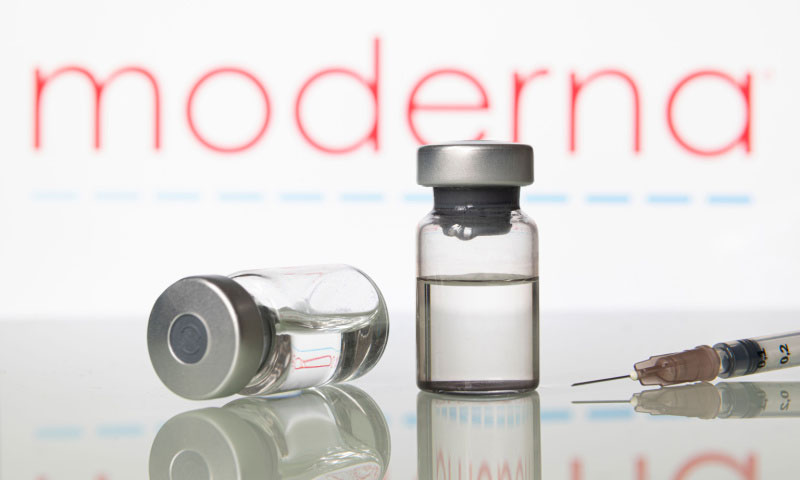On the 13th of December, Moderna, and Merck announced a new investigational mRNA cancer vaccine. According to the study conducted, the vaccine proved efficient, giving hope to skin cancer patients. The company pioneering mRNA technology developed an investigational personalized vaccine, which, in combination with Merck & Co.’s immunotherapy Keytruda, proved efficient in the adjuvant treatment of patients, reducing risks of recurrence and death by 44%. The vaccine works on the same basis as the Covid-19 vaccine most know the company for. Stéphane Bancel, Moderna’s Chief Executive Officer says the results are “highly encouraging.”
The new mRNA technology-based vaccine’s impact could be significant in melanoma treatment outcomes. With time, the technology could help in the treatment of other cancers, too. The personalized vaccine called mRNA-4157/V940 is Moderna’s first non-covid related finding.
Moderna’s mRNA technology
Vaccines are one of the greatest inventions of humanity. They are our weapon for keeping diseases under control due to widespread immunity. Smallpox has been eradicated. Polio, measles, and tetanus aren’t part of our lives anymore, thanks to the efficiency of vaccination. Moderna is famous for its mRNA technology, first used for coronavirus vaccines in the recent past. Vaccines finally appearing has also been an important psychological support. It helped reduce the anxiety of other conditions associated with the pandemic, too.
Traditional vaccines vs. mRNA
Thanks to vaccines, a plague-free, better quality of life is everyone’s right today. But vaccines have a long history too, and not all of them work on the same basis of technology.
Traditional vaccines typically contain agents made from weakened or killed forms of the microbe. It can also use its toxins, or its surface proteins that resemble the cause of the disease itself. Those are made from viruses grown on mammalian cells or chicken eggs. Traditional vaccines are excellent for fighting and preventing the diseases. But mRNA technology vaccines have the advantage of being significantly faster to produce. The mRNA is made from a DNA template in a lab, taking only about a week. The DNA sequence can be synthesized from a digital sequence sent from anywhere globally using a computer. So, instead of introducing a virus to the body, next generation mRNA vaccines have an effect upon the cells that make proteins in the body. The messenger ribonucleic acid teaches those cells to make a protein that triggers an immune response targeting a specific sickness, like cancer.
How does it work?
An mRNA vaccine uses a small piece of genetic material called messenger RNA (mRNA) to trigger an immune response. mRNA is a molecule that carries instructions from DNA to the part of the cell called the ribosome, where proteins are made.
In an mRNA vaccine, the mRNA molecule encodes a protein or fragment of a protein from the virus or the disease-causing organism. When the mRNA vaccine gets into the body, it is received by cells, and the encoded protein is produced. The immune system recognizes the protein as foreign and produces an immune response consisting of antibodies to the protein. This immune response helps protect the body from future infections with the virus or the organism that causes the disease.
This functioning model is by which the new vaccine for treating melanoma was designed. While mRNA technology is relatively new, more research is needed, but the current study shows great potential and proves significant effectiveness.
Merck’s Keytruda
To better understand why the new treatment is working, we need to look at Keytruda, the other element in the successful combination.
Keytruda, or pembrolizumab, is a monoclonal antibody that targets the protein PD-1, which can be found on the surface of immune cells. PD-1 helps to regulate the immune system, and it can inhibit the immune system’s ability to attack cancer cells. Keytruda works by blocking the activity of PD-1, helping the immune system to recognize and attack cancer cells more effectively.
Joined forces
The combination of the vaccine and the anti-PD-1 Keytruda treatment takes place after patients undergo surgery and remove the tumors. The adjuvant setting treatment’s purpose is to prevent cancer from returning.
The study on the combined treatment in the adjuvant setting proved clinically and statistically significant in recurrence-free survival, compared to the adjuvant treatment with Keytruda alone of patients with stage III/IV melanoma. Combined treatment with the personalized mRNA-4157/V940 vaccine and Keytruda reduced the risk of recurrence or death by 44%. This finding will have to be concluded in the Phase 3 study, scheduled for 2023.
About the study
In the study conducted, the participating patients were assigned to receive one of the treatments. One group received Keytruda alone, while the other received Keytruda and one of Moderna’s personalized mRNA vaccines. The patients had surgery to remove the cancer. For the group which got the vaccine too, Moderna biopsied and genetically sequenced the tumors, identifying 34 personal genetic mutations on which they based each personalized cancer vaccine. The injection trained the patient’s immune system to target and destroy cancer cells.
Patients who participated in the study were treated and monitored for two years. There’s a lot of statistical data researchers haven’t shared yet, like the participating patient’s T-cell levels. We have to wait for that data until the study concludes with the Phase 3 study in the following years. Patients will be monitored for another year or more to gather data on how long-lasting the immune response is. There are chances that in the future, the vaccine might be suitable to use as prevention in patients with a high risk of developing the disease.
The personalised vaccine
The tricky thing about cancer is, that each and every patient’s cancer is unique. This explains why medication for the same type of cancer works for some but doesn’t work for everyone the same way. Moderna produces medicine tailored to the patient’s unique cancer, called a Personalized Cancer Vaccine, in the hope of helping patients respond better to treatment.
Cancer cells look different from healthy cells because they have mutations in their DNA.
“Cancer cells have mutations in their DNA that make them look different from normal cells. Each patient’s cancer has a different set of mutations. Like a fingerprint or facial recognition scan. The first step in making a personalised vaccine is recognizing the patient’s specific mutations. To do this, we simultaneously sequence DNA from a patient’s blood, which is not mutated, and DNA from a patient’s tumor. Using cloud-based computing, we can compare the two to identify a set of mutations unique to that cancer. Then we use special software programs we developed at Moderna to predict up to 34 mutations that we believe will help the patient’s immune system launch the strongest attack. Then, we create instructions that encode for each of these mutations. We load all of these instructions into a single molecule of messenger RNA or mRNA, and this is what makes up the patient’s personalized cancer vaccine. Our goal is that this design of a personalized cancer vaccine will inform the immune system to attack and destroy only the tumor cells.
We are studying how the designed instructions carried on the mRNA can tell the cells of the body to express proteins on their surface that look like the DNA mutations. These protein fragments may train the patient’s immune system to better recognize the mutations on the cancer cells as foreign invaders and then potentially attack and destroy those cells” – explains Moderna on their youtube channel.
The vaccine hasn’t been approved for use yet, but the studies conducted give a reason for hope. Following a concluding study in the near future, they can hopefully start to start implementing the therapy.
In conclusion
From the development of chemotherapy to targeted therapies and immunotherapies, the field of cancer treatment has come a long way. The advancements have not only improved survival rates, but also the quality of life for patients. New treatments make more personalized approaches possible. They take into account the specific characteristics of each person’s cancer and their unique needs. The ongoing research in cancer treatment has led to a better understanding of cancer’s underlying causes and mechanisms. This understanding will help to make future treatments more effective. The scientific progress in cancer treatment is nothing short of remarkable. It’s crucial for researchers to get support to continue their studies. Their work can change the lives of many people affected by diseases. These efforts have the potential to reduce the burden of cancer on people and, ultimately, on society as a whole.














